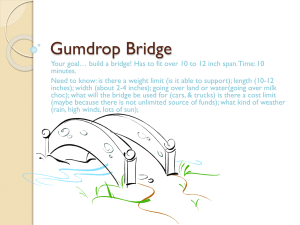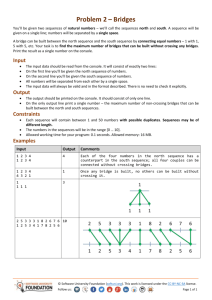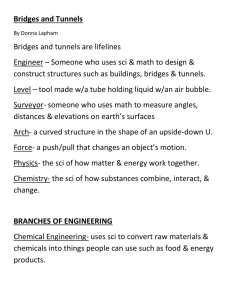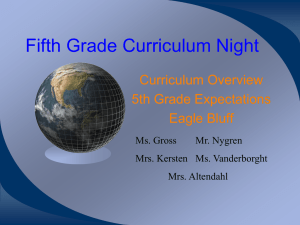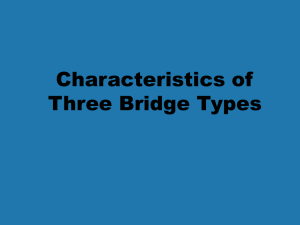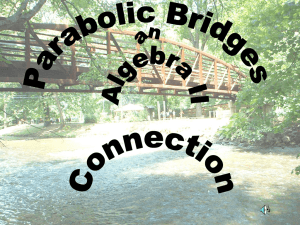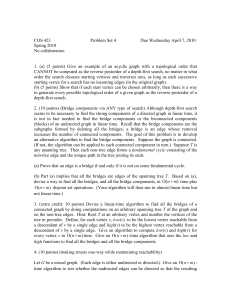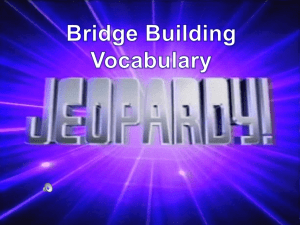Lesson Plan - Building Structures
advertisement
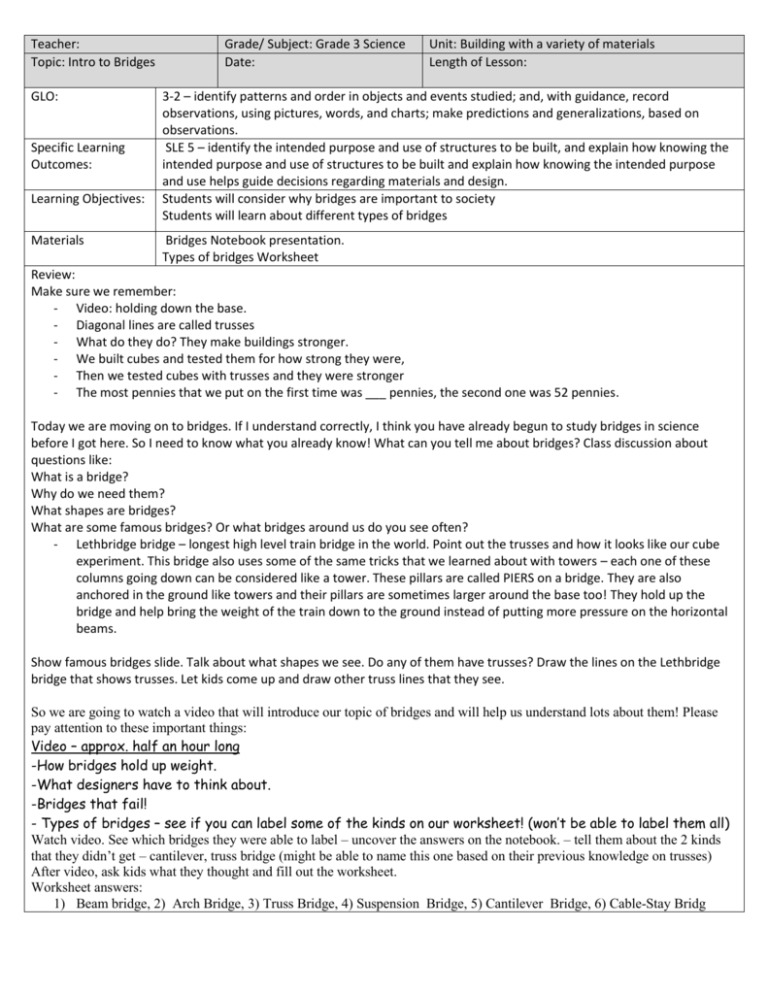
Teacher: Topic: Intro to Bridges GLO: Specific Learning Outcomes: Learning Objectives: Materials Grade/ Subject: Grade 3 Science Date: Unit: Building with a variety of materials Length of Lesson: 3-2 – identify patterns and order in objects and events studied; and, with guidance, record observations, using pictures, words, and charts; make predictions and generalizations, based on observations. SLE 5 – identify the intended purpose and use of structures to be built, and explain how knowing the intended purpose and use of structures to be built and explain how knowing the intended purpose and use helps guide decisions regarding materials and design. Students will consider why bridges are important to society Students will learn about different types of bridges Bridges Notebook presentation. Types of bridges Worksheet Review: Make sure we remember: - Video: holding down the base. - Diagonal lines are called trusses - What do they do? They make buildings stronger. - We built cubes and tested them for how strong they were, - Then we tested cubes with trusses and they were stronger - The most pennies that we put on the first time was ___ pennies, the second one was 52 pennies. Today we are moving on to bridges. If I understand correctly, I think you have already begun to study bridges in science before I got here. So I need to know what you already know! What can you tell me about bridges? Class discussion about questions like: What is a bridge? Why do we need them? What shapes are bridges? What are some famous bridges? Or what bridges around us do you see often? - Lethbridge bridge – longest high level train bridge in the world. Point out the trusses and how it looks like our cube experiment. This bridge also uses some of the same tricks that we learned about with towers – each one of these columns going down can be considered like a tower. These pillars are called PIERS on a bridge. They are also anchored in the ground like towers and their pillars are sometimes larger around the base too! They hold up the bridge and help bring the weight of the train down to the ground instead of putting more pressure on the horizontal beams. Show famous bridges slide. Talk about what shapes we see. Do any of them have trusses? Draw the lines on the Lethbridge bridge that shows trusses. Let kids come up and draw other truss lines that they see. So we are going to watch a video that will introduce our topic of bridges and will help us understand lots about them! Please pay attention to these important things: Video – approx. half an hour long -How bridges hold up weight. -What designers have to think about. -Bridges that fail! - Types of bridges – see if you can label some of the kinds on our worksheet! (won’t be able to label them all) Watch video. See which bridges they were able to label – uncover the answers on the notebook. – tell them about the 2 kinds that they didn’t get – cantilever, truss bridge (might be able to name this one based on their previous knowledge on trusses) After video, ask kids what they thought and fill out the worksheet. Worksheet answers: 1) Beam bridge, 2) Arch Bridge, 3) Truss Bridge, 4) Suspension Bridge, 5) Cantilever Bridge, 6) Cable-Stay Bridg

